Last Updated on November 5, 2021 – 8:14 am
“Education is not the learning of facts, but the training of the mind to think,” says Albert Einstein. Developing a growth mindset is a crucial step in overcoming challenges in business life. It is no wonder there are 12,000 searches on Google for “Growth Mindset” quotes each day.
But, what is “growth mindset” exactly? How does it differ from a fixed mindset? And, how can an organization foster a growth mindset in the workplace?
A growth mindset is defined as “a belief that one’s intelligence, capacities, and/or talent will develop and grow with effort.” In simpler terms, “It is a belief and understanding that we can improve if we’re willing to work hard, dedicate ourselves, and practice. Growth mindset is also about looking at everything we experience as an opportunity to learn and develop”.
The term is coined by Carol Dweck, a Professor of Psychology at Stanford University and the author of the book Mindset: The New Psychology of Success. The book compares the impact of fixed vs. growth mindsets in business, education, parenting, and relationships. Dweck first started to study students’ different attitudes about failure and challenge -mostly, why some rebound from challenges when others are devastated by setbacks. In her work, she found out that some students understood that abilities could be developed (these students have growth mindsets, according to Dweck). Another group of students felt it was painful when they fail (fixed mindset perspective). When students believe they can get smarter, they put in extra time and effort, leading to higher achievement.
In her very famous Ted Talk, Dweck talks about a high school in Chicago where students get the grade “Not Yet” if they didn’t pass a course. She says, “if you get the grade “Not Yet,” you understand that you’re on a learning curve. It gives you a path into the future”. Understanding you are in the “not yet” zone frees the students from the tyranny of now’s failures and setbacks.
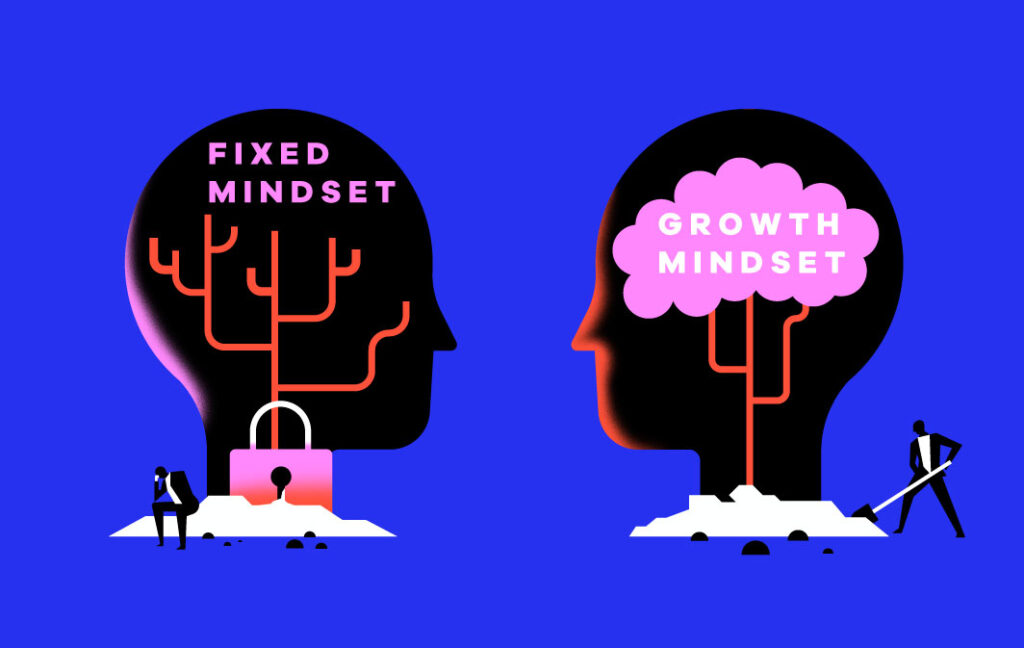
Growth vs. Fixed Mindset at Work
Paradigm’s White Paper called “Growth Mindset at Work” explains the two mindsets: “Some professionals lean toward what’s called a ‘fixed mindset,’ the belief that abilities and talents are fixed at birth. People with a fixed mindset think of these qualities like eye color. Just like you either have blue eyes, or you don’t, people with this mindset believe that you’re born with certain talents and abilities and not others, and there’s not much you can do about that. Other professionals lean toward a ‘growth mindset,’ the belief that talents and abilities can be developed.”
Researcher Courtney Ackerman says the main difference between the two mindsets is “the belief in the permanence of intelligence and ability. One views it as very permanent, with little to no room for change in either direction, while the other views it as more changeable, with opportunities for improvement (or, for that matter, regression).”
The difference in mindset leads to differences in behavior. People with a fixed mindset are not likely to put in much effort to change their inherent intelligence and abilities. On the other hand, people with a growth mindset are much more willing to put in extra time and effort to achieve higher.
Organizational Mindsets
Studies indicate that mindsets are not stable things. They can change. One can learn to develop a growth mindset just like any other skill. Not just the people but also the organizations can develop a growth mindset.
Since 2010, Dweck and her colleagues have collaborated with the consulting firm Sean Delaney to conduct research on organizational mindsets. To explore company mindsets, the researchers asked a number of diverse employees at seven Fortune 1000 companies about the extent to which they agreed with various statements like, “When it comes to being successful, this company seems to believe that people have a certain amount of talent, and they really can’t do much to change it.” As you can guess, high levels of agreement with these types of statements suggested that the organization had a predominantly fixed mindset or a “culture of genius,” in which talent is worshipped.
They also conducted surveys on how this organizational mindset influenced employee satisfaction, perceptions of the corporate culture, levels of collaboration, innovation, and ethical behavior, and how it affected supervisors’ views of employees. They saw that there was a “whole constellation of characteristics” that went with each mindset: “For instance, employees at companies with a fixed mindset often said that just a small handful of ‘star’ workers were highly valued. The employees who reported this were less committed than employees at growth-mindset companies and didn’t think the company had their back. They worried about failing, and so pursued fewer innovative projects. They regularly kept secrets, cut corners, and cheated to try to get ahead”. On the other hand, according to the same research, “culture of development” companies have higher levels of trust, commitment, ownership, and loyalty and lower levels of unethical behavior. Also, the employees believe these organizations support (measured) risk-taking, innovation, and creativity. Another research conducted by Microsoft has proven that employees with a growth mindset are far more likely to go after more innovative projects and outcomes. A growth mindset also encourages collaboration among teams which is the catalyst that drives business success, according to a Microsoft study.
The key findings say having a growth mindset is crucial for business, but how can organizations develop a growth mindset?
1. Developing yourself means developing your organization
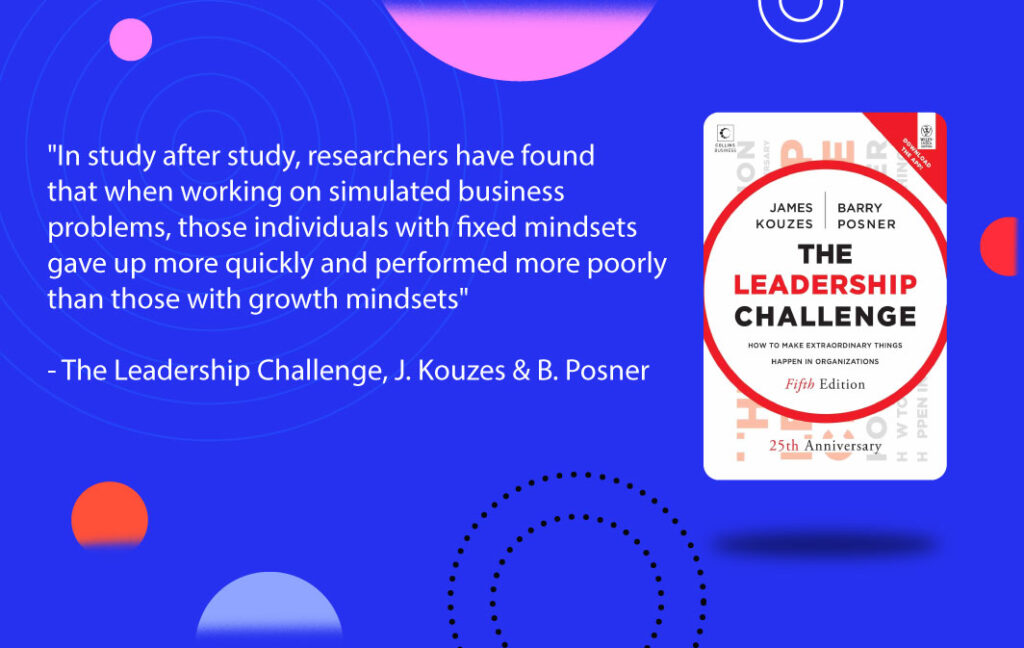
It’s important to have a learner type of attitude within your workplace. According to Dweck (2006), research has shown that people with a fixed mindset tend to be superficial learners who give up when faced with obstacles. In contrast, those with a growth mindset tend to be deep learners who persist in the face of difficulty leading to achievement and success. Building your capacity to be an agile learner begins with a growth mindset. “In study after study, researchers have found that when working on simulated business problems, those individuals with fixed mindsets gave up more quickly and performed more poorly than those with growth mindsets” Maintaining an organizational growth mindset means continuous learning is needed.
Dweck’s research suggests that you can do certain things to develop a growth mindset and a learner attitude. Author Ruth Helyer summarized these as follows:
- Believe that the brain can develop like a muscle-get smarter by exercising your brain
- Push yourself out of your comfort zone by choosing difficult tasks that offer opportunities for learning something new or improving your knowledge and skills.
- Confront your weaknesses and think of strategies for dealing with them
- Don’t compare yourself to others either favorably or unfavorably -or be interested in improving your learning
- Focus on and recognize the effort you have made despite setbacks.
- Persist in the face of difficulty.
Heyer also gives some exercises like identifying and completing at least two work-related tasks that you know you will find challenges that will offer considerable opportunities for learning, such as:
- developing and giving a presentation to work colleagues,
- keeping a reflective diary of the barriers you face and strategies you use to overcome them,
- and drawing up a list of learning points when you have completed a task: what went well, what went less well, and what you would have done differently.
2. Find the fixed-mindset triggers in your work environment and work on them
It’s not easy to attain a growth mindset when we face challenges, receive criticism, or when your company plays the talent game, but it is crucial to find these triggers and work on them. As Carol Dweck says in a Harvard Business Review article, “When we face challenges, receive criticism, or fare poorly compared with others, we can easily fall into insecurity or defensiveness, a response that inhibits growth. Our work environments, too, can be full of fixed-mindset triggers. To remain in a growth zone, we must identify and work with these triggers. Many managers and executives have benefited from learning to recognize when their fixed-mindset “persona” shows up and what it says to make them feel threatened or defensive. Most importantly, over time they have learned to talk back to it, persuading it to collaborate with them as they pursue challenging goals.”
A recent example of how Microsoft applies this organizationally is their new management framework named “Model Coach Care.” Each element of the new management model relates to Microsoft’s overall emphasis on the growth mindset. Modeling means to live the Microsoft culture and be a demonstrable example, a role model for employees. Managers should show that they practice a growth mindset to have a framework for approaching problems and recovering from setbacks. Coaching is about defining team objectives and helping the team adapt and learn. Managers must create a space where employees can learn from their mistakes and emphasize their potential to grow and learn. Caring is the part of the model that has been the most widely accepted liked by employees and managers together. Joe Whittinghill, corporate vice president of talent, learning, and insights at Microsoft states, “We feel that our managers have an expectation and responsibility to care. That’s doing things like attracting and retaining great people, knowing each person’s capabilities and aspirations and investing in the growth of others”. That’s a new definition of growth management.
3. Hire people who have growth mindset attributes or encourage people to shift mindsets within the company
“People with growth mindsets have a sense of growing and wanting to get consistently better at what they do. They are curious and have a passion for learning and stretching themselves at every stage of their careers,” states Senn Delaney-Stanford’s organizational mindset study.
The leaders must embody a growth mindset. Employees need role models who know how to communicate, value swift delivery, and create an environment where teams can concentrate on what’s important.
For this purpose, Telenor, a Norwegian multinational telecommunications company, started a program: “A group of Telenor’s senior managers was the first group to go through the growth mindset training program. After positive feedback from the one-day growth mindset workshop with the 60 leaders, the company’s 22000 employees began. Overall, the initiative introduced a growth mindset as a way of working at Telenor.
4. Set a balance between performance-based and development goals
The way teams set goals can have an impact on their mindset. Dweck’s research shows that people with fixed mindsets are more likely to set performance goals as opposed to development goals. While this may not seem shocking, performance-related goals are more closely tied to things people are already good at. On the other hand, by setting learning goals, employees take on new challenges, experiment, and grow. Team leaders and managers should help people find the right balance between performance-based and development goals. For example, Cigna, a global health services company, has created a performance management approach called “Connect for Growth.” In performance conversations between managers and employees, goals are set in a way that requires employees to stretch and expand their current abilities; coaching dialogues deliberately include growth mindset language such as “yet” and “what if.”
A growth mindset is about looking at everything we experience as an opportunity to learn and develop. The author of the book Bring Your Whole Self to Work: How Vulnerability Unlocks Creativity, Mike Robbins, says, “When something happens we don’t like or understand, instead of asking “Why is this happening to me?” we can ask, “Why is this happening for me?” And that shifts us from victimhood to a place of curiosity, empowerment, and potential growth.
A growth mindset is connected to interest, dedication, grit, and confidence. Carol Dweck says, “We like to think of our champions and idols as superheroes who were born different from us. We don’t like to think of them as relatively ordinary people who made themselves extraordinary”.
Welcome to (being) extraordinary.


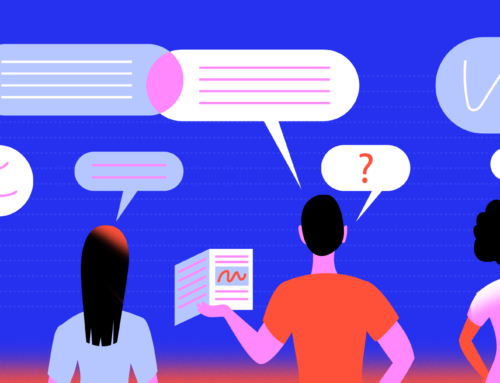

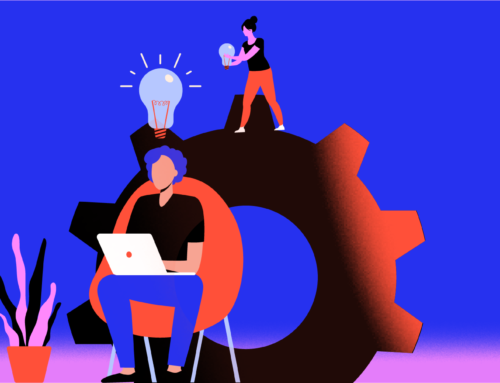
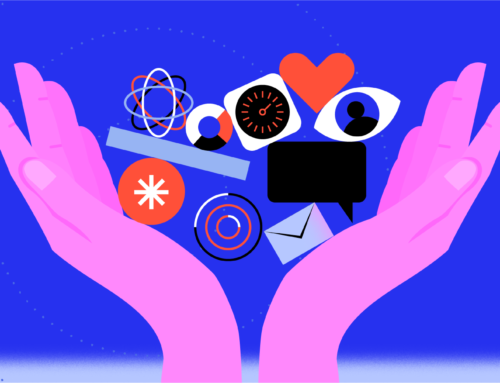
Leave A Comment